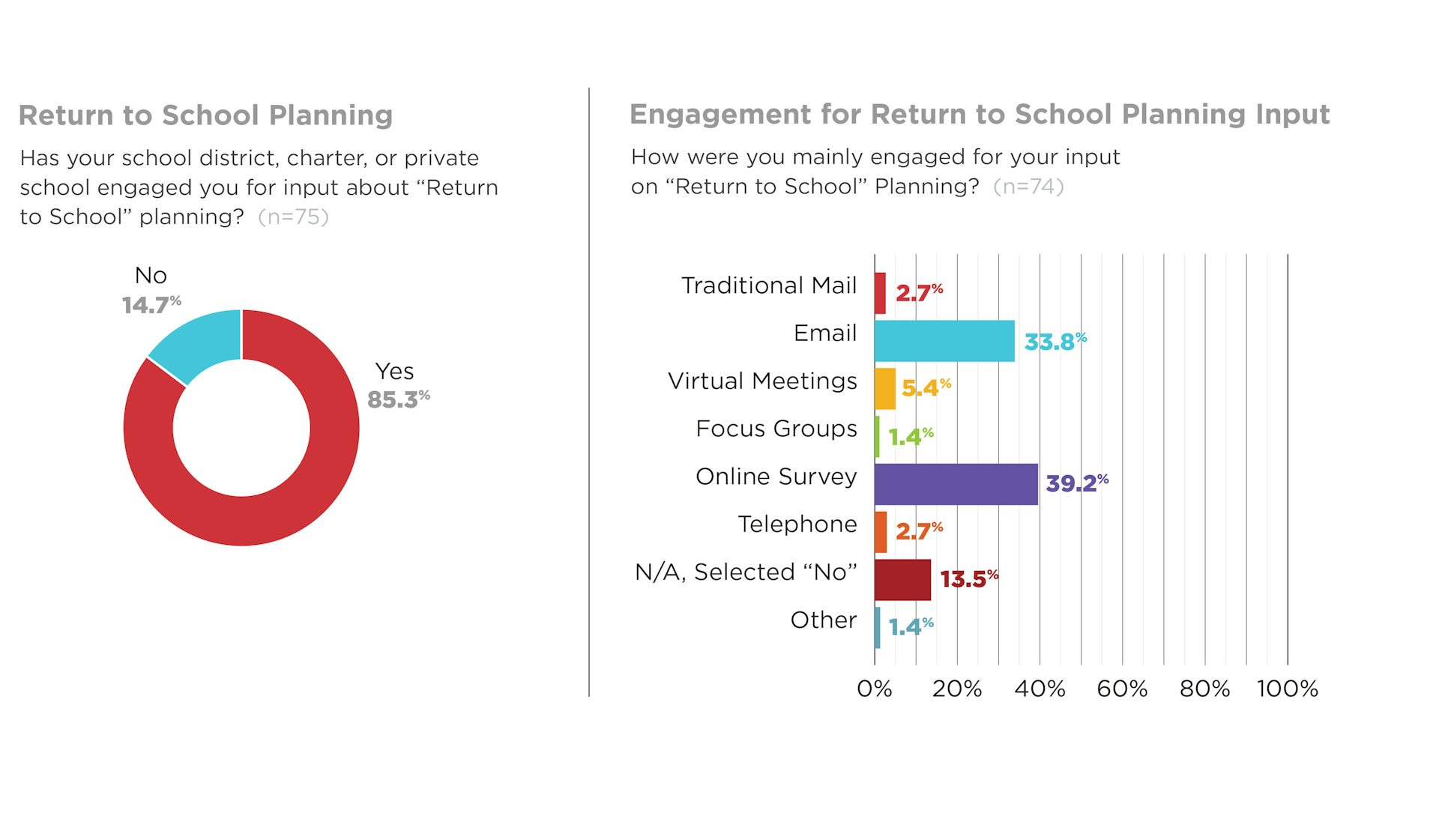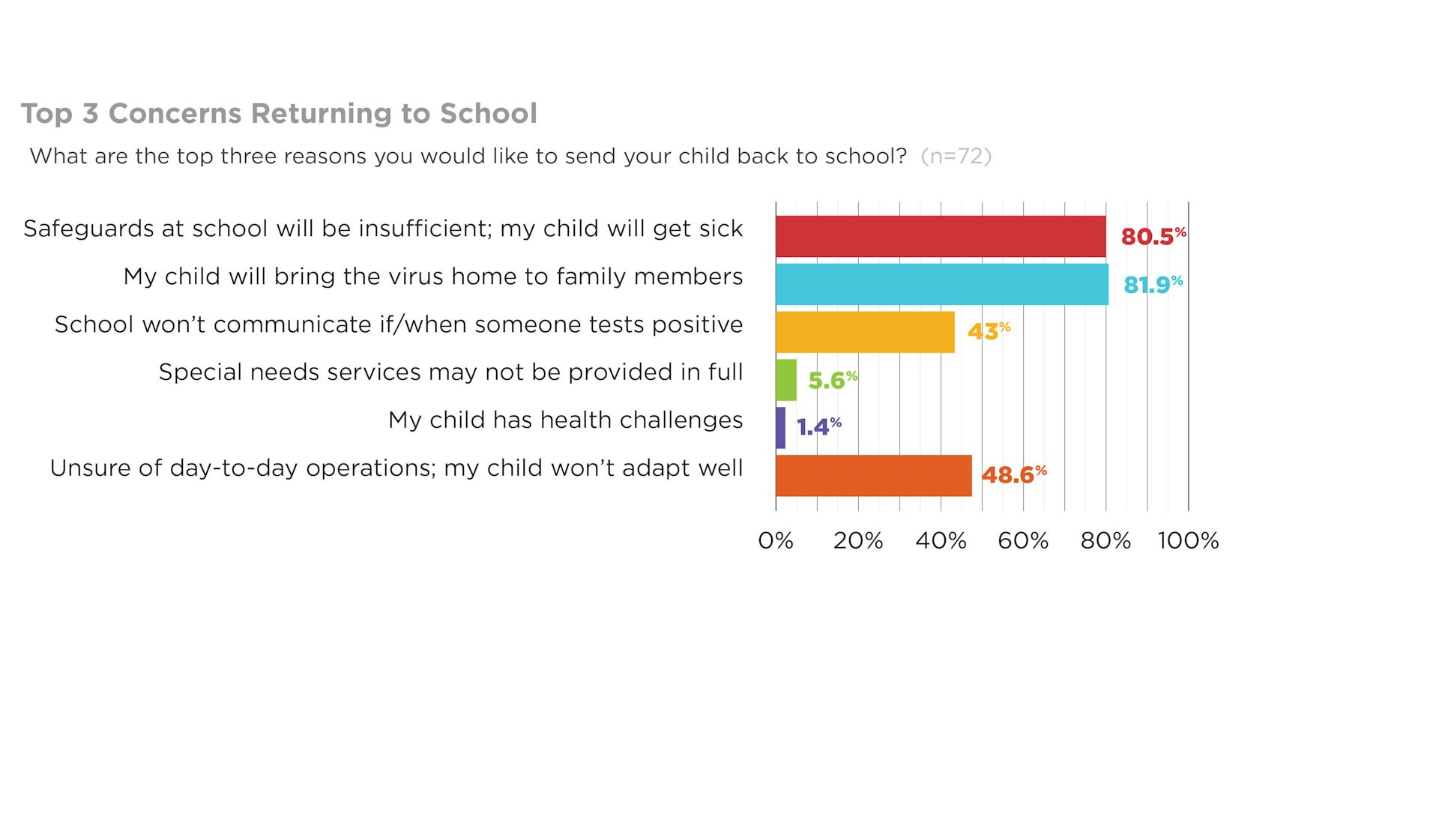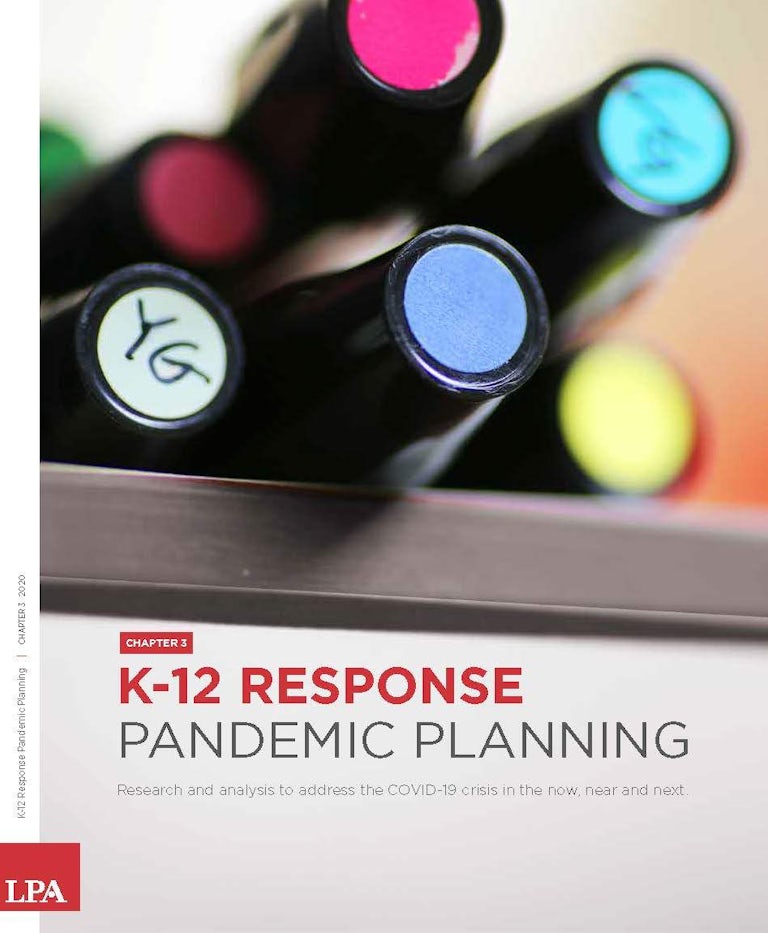How are parents reacting to their child returning to school? To learn more, LPAred surveyed a diverse focus group of parents and guardians—LPA employees taking care of K-12 children—to learn more about their top issues as schools start to reopen.
The results illustrate the concerns and issues shaping parents’ perspectives. Of the 75 respondents, 65 percent cited their children’s feeling of isolation and “need for social interaction with peers and teachers” as primary reasons for wanting their kids back on campus. A similar number said it was “to tough to fill each day with the enriching activities my child needs.”
While not a large sample, the results provide a snapshot of how parents in California and Texas are responding to the issues surrounding the return to school.
“We’re always looking to tap into the diverse expertise and the wide opinions in our own firm,” said LPA Project Designer Lindsay Hayward. “This seemed like a perfect opportunity to garner opinions on the state of people’s comfort levels with the return to school.”
Parents overwhelming cited concerns that school safety protocols will be insufficient and the danger of children bringing home the coronavirus as major issues when making the decision to send their children back to school. Only 25 percent said they prefer a return to the physical campus in the fall; 43 percent voted for a hybrid approach and 32 percent prefer distance learning-only.
“It’s hard to disassociate physical safety from the social and emotional components,” Hayward says. “The potential for students to fall behind academically only adds to the complexity of parents’ concerns.”
A Look Into The Parents' Perspective
A survey of parents and guardians found growing feelings of isolation and frustration in developing activities to engage at-home learners during the pandemic.

A Social-Emotional Learning Roadmap to Navigate Reopening of Schools
The Collaborative for Academic, Social, and Emotional Learning (CASEL) and more than 40 leading education organizations developed a guidance roadmap to help educators and communities transition back to school during the COVID-19 pandemic. Reunite, Renew and Thrive: Social and Emotional Learning (SEL) Roadmap for Reopening School includes detailed recommendations with a particular focus on equity and social-emotional learning.
The work addresses the “the layered impact of school closures, the COVID-19 pandemic, an economic crisis, and racial inequities exacerbated by the pandemic and amplified by the nationwide mobilizations for racial justice.” The guidance builds on the existing strengths of a school community.





Harvard Public Health Experts Provide Reopening Guidance
In June, the Harvard T.H. Chan School of Public Health (HCSPH) Healthy Buildings program released a set of guidelines entitled Healthy Schools: Risk Reduction Strategies for Reopening Schools. The report presents a range of control strategies for classrooms, buildings, policies, schedules, and activities on how to keep students and staff safe. In addition, the Harvard Global Health Institute (HGHI) issued guidance on when it is safe to open schools based on the size of the virus outbreak in the local community. The Path to Zero & Schools: Achieving Pandemic Resilient Teaching and Learning Spaces focuses on risk incident levels in the community and the direction of trend and rate of change.
20 Essential Questions Before Returning to School
As a third resource, and in collaboration with Portland State University, HCSPH also prepared a set of questions as a guide for parents, teachers, and school staff who “may not be sure what to ask or look for at their school.” Entitled 20 Questions to Ask Before Sending Your Kids Back to School, each question includes information on why the topic matters and relevant research.
These questions align with the responses from a recent survey of LPA’s parent community on the return to school. As part of LPA’s K12 Response Pandemic Planning series, LPA parents in California and Texas were asked the open-ended question, What question do you still need answered by the district/school before you will send your child back to campus in this fall?
LPA parent questions mirrored those suggested by the HCSPH. The topics LPA parents most frequently needed more information on included: the use of masks, physical distancing measures, disinfection protocols, de-densification strategies such as cohort grouping, and the adequacy of distance learning to prevent students from falling behind academically. One line of questioning from the HCSPH that was notably absent in the LPA parent response involved questions about ventilation and air filtration systems. The HCSPH suggests parents ask how outdoor air supply rates will be increased in school buildings; if the ventilation system uses a highly rated filter and if it has been inspected or replaced recently; and, if portable air cleaners with HEPA filters will be used in classrooms and other spaces.
- 1: Are the number of cases in the area low enough for schools to reopen
- 2: When and how will masks be required and how will the school support mask use?
- 3: Will handwashing stations or hand sanitizer be available throughout the school and when will children be required to wash their hands?
- 4: When and how will physical distancing be maintained throughout the day?
- 5: Will outdoor air supply rates (ventilation) be increased in school buildings, including classrooms, and how will the school verify that ventilation is adequate>
- 6: Does the ventilation system use a filter with a rating of MERV 13 or higher for air going into classrooms and has it been inspected or replaced recently?
- 7: Will portable air cleaners with HEPA filters be used in classrooms and other relevant spaces in the school?
- 8: Will any physical barriers (eg. Plexiglass) be installed in the school?
- 9: Will de-densification strategies, like staggered arrival and dismissal times, be implemented?
- 10: Who is the “point person” or person in charge of the COVID-19 response team/plan and how will they communicate changes in school policy to parents/students?
- 11: Will the school consider using alternative classroom and lunchroom spaces?
- 12: How will transportation to and from school change when school reopens?
- 13: How will the school limit the amount of shared surfaces and what is the plan for regularly disinfecting surfaces throughout the entire school?
- 14: What guidance for contact tracing, testing, and quarantine/isolation is in place in the event that someone in the class contracts COVID-19?
- 15: How will parents, students, and staff be educated about symptoms and will temperature or other health checks be done on students, staff and teachers everyday?
- 16: If a student or teacher has to stay home, what strategies are in place to support remote work or learning and make sure students don’t fall behind on their schoolwork
- 17: What other policy changes are being considered to reduce COVID-19 transmission risk?
- 18: What precautions will there be during physical education, indoor choir, band, or theater to make these activities more safe?
- 19: Will recess be modified when schools reopen?
- 20: Will students be allowed to participate in sports?















